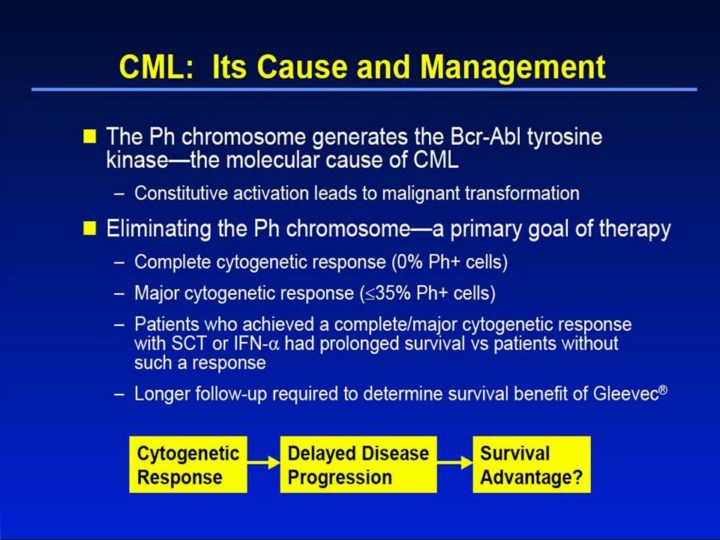| front |1 |2 |3 |4 |5 |6 |7 |8 |9 |10 |11 |12 |13 |14 |15 |16 |17 |18 |19 |20 |21 |22 |23 |24 |25 |review |
 |
CML: Its Cause and Management1,2 • The Bcr-Abl fusion protein, the product of the Ph chromosome, fulfills the criteria for an ideal molecular target in cancer. Extensive research has shown that Bcr-Abl is the unique pathophysiologic cause of CML. • Bcr-Abl tyrosine kinase activity is constitutively increased in CML cells, affecting numerous signal transduction pathways that are essential for leukemic transformation, including increased cellular proliferation, antiapoptotic effects, and adhesion defects. • A primary goal of therapy for CML is achieving a complete or major cytogenetic response— eliminating or substantially reducing Ph+ cells. • Patients who achieved a complete/major cytogenetic response with stem cell transplantation (SCT) or interferon-alpha (IFN-α) had prolonged survival vs patients without such a response. • Longer follow-up is required to determine the survival benefit of Gleevec®. References 1. Sawyers CL. Chronic myeloid leukemia. N Engl J Med. 1999;340:1330-1340. 2. Giralt S, Kantarjian H, Talpaz M. Treatment of chronic myelogenous leukemia. Semin Oncol. 1995;22:396-404. |